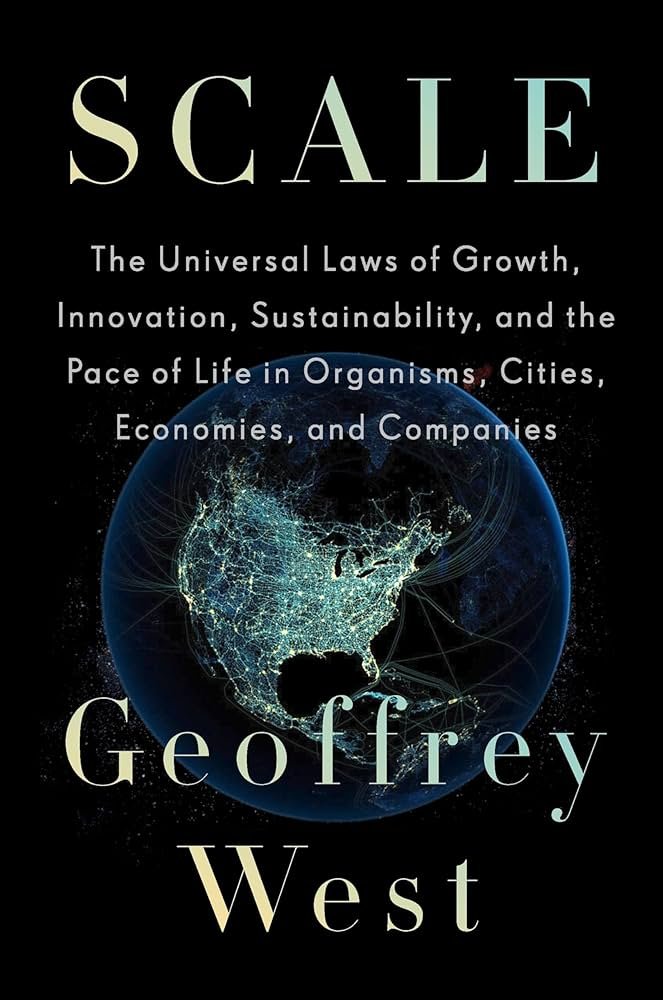Scale
Scale: The Universal Laws of Growth, Innovation, Sustainability, and the Pace of Life in Organisms, Cities, Economies, and Companies
Geoffrey West
What it’s about
The author proposes that there are generic rules or principles which apply to physical systems (including life forms) and which, therefore, are reflected and revealed in any representation of that system independent of the chose scale of observation. As he states, “The existence of these remarkable regularities strongly suggests that there is a common conceptual framework underlying all of these very different highly complex phenomena and that the dynamics, growth, and organization of animals, plants, human social behavior, cities, and companies are, in fact, subject to similar generic “laws.”
West, Geoffrey. Scale: The Universal Laws of Growth, Innovation, Sustainability, and the Pace of Life in Organisms, Cities, Economies, and Companies (p. 4). Penguin Publishing Group. Kindle Edition.
Why I like it
What I like about this, it provides theoretical and empirical support for my proposition that at the core of life on the planet is an ‘awareness’ of the scarcity of energy and, similarly, of the opportunity cost of this energy. In my understanding of how life forms trade off alternative allocations of energy, there is a commonality seen in all life forms of and awareness of this opportunity cost, and, more importantly, the opportunity cost is common to all life forms. This is my interpretation of the principles of modern finance theory, which posits that that the required return on any given investment (which I refer to as The Opportunity Cost of Capital, TOCC, for a given investment), is determined based on it’s riskiness relative to the ‘fully diversified portfolio of assets’ which, in our theoretical understanding, is that portfolio which contains all productive assets whether publicly traded or otherwise. (Note that as a readily available estimate, or proxy, for this portfolio, we typically use a large market index such as the S&P 500.) In my understanding, this portfolio of all productive assets is simply the energy and resources of the planet, and the required return is determined based upon the riskiness of that portfolio and the risk aversion of the life form which occupies the planet (of which their is only one, but which can be viewed from any given choice of scale, such as looking at a single-celled organism, such as a bacteria, which, as the author explains, ‘live for only an hour and need only a tenth of a trillionth of a watt to stay alive,’ or similarly selecting an individual cell, such as a liver or heart or skin cell within a human, or selecting to see an ‘entire’ life form such as a bee or a human, or selecting the scale of the entire beehive or human species, or selecting to see the scale of an ecosystem, in which there will be many beehives which are tightly integrated with the rest of the ecosystem, or choosing the scale of all life on the planet simultaneously. As the author shows, the choice of scale is arbitrary and the the observation of the common principles is present independent of chosen scale. This fits very well with my interpretation of insights of finance which consider the opportunity cost of capital as being determined by the riskiness of the investment of resources relative to the fully diversified portfolio, and which is independent of the scale of the project or the scale of the observer (individual investor, collection of investors (such as a a company), or entire market of investors).

